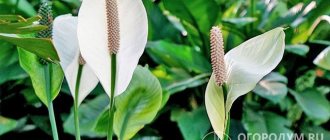When and where do violets bloom?
Abundant flowering of violets with proper care is possible all year long. And the best place to grow them is a windowsill. There are a number of differences in caring for Saintpaulia during the cold period. How to make violets bloom in winter:
- you need to protect indoor Saintpaulia from the cold;
- add lighting with fluorescent lamps for 2-3 hours a day;
- remove all side sockets;
- water 2 times a week.
In summer, more abundant and frequent watering is required.
Kostina Fantasy
Spectacular violet in pink and lilac tones. Produces simple and semi-double flowers with a white eye, outline and lilac strokes on the petals.
The cap is very lush, although the buds are small. With sufficient lighting, Kostina Fantasia looks luxurious and bright. An adult plant produces larger buds.
If temperatures are too high, white color does not appear. Therefore, it is advisable to provide Saintpaulia with coolness: humidify the air around it, place the pot on the northern windowsill.
During the period of flower bud formation, it is necessary to feed the crop with phosphorus-potassium fertilizers. Once every 6-9 months it is transplanted into fresh soil.
How to create conditions for flowering at home
To grow a flower, you need to use plastic pots, gradually increasing their size as the bush grows. Ceramic containers are not very suitable for Saintpaulia. They release salts that are harmful to the plant.
The soil adjacent to the walls of a clay pot dries out quickly, injuring the root system of Saintpaulia; violets growing in ceramic containers must be constantly monitored to prevent the soil from drying out. Plants in plastic containers need watering much less often.
You need to follow the recommendations on how to make violets bloom all year round, and then the buds will constantly please the eye:
- choose a location where there is plenty of light and no burning sun rays;
- avoid drafts;
- water with settled and boiled water;
- provide a high level of humidity;
- update bushes;
- plant plants in breathable, moisture-absorbing soil.
Temperature
The plant loves warmth. On a cold windowsill and with constant drafts, it will not feel comfortable. The most suitable temperature regime for it: +17…+20°С. It is also not worth heating the room where the flower is located above this indicator.
Air humidity
Saintpaulia requires medium to high ambient humidity. It is advisable that this figure does not fall below 50%. It is better not to spray flowers. If the air is too dry, then irrigation should be carried out near the pot using a fine sprayer. Spraying is allowed only during flowering. In other cases it is prohibited. It is necessary to ensure that drops of water do not fall on the leaves, otherwise, under the influence of sunlight, red spots will form in these places.
Violet does not tolerate hot, dry air well. If the ambient temperature has risen too high, it is recommended to place the Saintpaulia pots on a wide tray filled with wet peat, sand, expanded clay or pebbles. The flowers should be placed so that the bottom of the pots does not come into contact with the fillers. To do this, you need to equip an air cushion. Air access to the violet roots through the drainage holes should always be open.
Or you can place containers with Saintpaulia between other plants, from the surface of which moisture evaporates well. This proximity will help create the humid microclimate necessary for violets.
Lighting
Proper lighting is one of the requirements for how to make violets bloom constantly at home. Saintpaulia is a shade-tolerant crop. For normal growth and flowering, the plant needs 2500 lux of light. Such illumination often occurs in the Urals region on cloudy and rainy days. Whether the lighting is suitable for the plant can be determined by the state of the crown. If there is not enough light, the leaves will stretch upward; if there is too much light, they will bend under the edge of the pot.
To achieve lush violet flowering, the pot must be rotated periodically, otherwise the rosettes will turn out one-sided. In addition, Saintpaulia must be in a sufficiently lit place for 50-60 days in order for the cap to bloom. The required daylight hours should be from 10 to 12 hours.
To ensure that violets bloom all year round, you can place them on shelves with constant artificial lighting. The plant does not have a genetically programmed dormant period, like other crops.
Different varieties of Saintpaulia have their own requirements for lighting parameters. Bushes with light green foliage thrive in a small amount of light, but violets with a rich dark crown color bloom poorly in the same conditions.
Location
Flowers love good lighting, but direct sunlight is destructive for them. It is best to place pots with plants on windowsills on the north or west side. When growing violets near eastern or southern windows, you will have to stock up on light curtains or at least mosquito nets. This way you can reduce the negative impact of hot sun rays on your indoor flower.
It is best to use seasonal accommodation. And in summer, place pots on the north, east or west side, and in winter - on the south.
Snow lace
This plant has an uneven rosette with large leaves on long petioles. However, during the flowering period, Snow Lace produces snow-white flowers with a lilac tint with shiny dots on the petals.
The buds are very voluminous; with a thin peduncle, the violet becomes fragile. It is better to place Snow Lace on a rack.
The flower needs to be provided with full daylight. To do this, it is illuminated with special lamps from 8 am, then they take a break and are illuminated again until 10 pm.
Saintpaulia reacts negatively to high temperatures. Keeping it in cool conditions protects it from diseases and prolongs flowering.
Care during flowering
Caring for blooming Saintpaulia at home involves timely watering, periodic feeding and replanting. In addition, you need to constantly monitor the surrounding microclimate. Then there will be no problem that the plant has many leaves and few flowers.
What should be done for proper watering:
- Start moistening the soil when the surface of the soil is dry. In winter, Saintpaulia needs watering every 3 days, and in summer - daily.
- Take water for irrigation at room temperature or even warmer.
- It is recommended to first settle it, then boil or filter it. These manipulations will help remove salts from the liquid.
- When watering, use a watering can to evenly moisten the soil.
- You can use wick watering of flowers. To do this, pour water into the pan and wait until the roots absorb some of the liquid. After 15 minutes, drain the remainder.
One of the reasons why violets do not bloom at home is the presence of side shoots. They shouldn't be in the pot. All formed branches are transplanted into a separate container. It is recommended to choose ready-made soil, specifically designed for Saintpaulias. It contains all the nutrients the plant needs.
If you use plain soil for replanting, add perlite or vermiculite to it. These substances will help the soil retain moisture well.
It would also be useful to add natural antiseptics, such as moss and charcoal, to the finished soil. Before planting the plants, the substrate is checked for acidity. Violets are suitable for a slightly acidic environment.
For constant flowering, the plant also needs rejuvenation. Reproduction of Saintpaulia at home is carried out in several ways:
- Leaves in soil or water. First, choose a leaf for rooting. The size of the plant, its growth and flowering will depend on this. It is best to choose a leaf right next to the peduncle or in the second row. There should be no defects on its surface. The leaf is broken off or cut, then placed in water or soil to a depth of 1 cm. To prevent the cut from rotting, you can add activated carbon to the water. After roots 2 cm long appear, the sprouts are transplanted into a small container with a drainage layer and suitable soil.
- Seeds. The sowing pot is filled with soil and perlite. The seeds are mixed with sand. Planting material is lightly sprinkled with soil. You can't water it. The soil is lightly irrigated with a spray bottle, covered with glass and provided with sufficient lighting. You need to ensure that the soil does not dry out and periodically ventilate the sprouts. When the seedlings grow to 1 cm, they can be transplanted into separate containers.
- Stepchildren that form in the axils of bushes. The side shoots are separated from the rosettes and rooted in the same way as the leaves.
Feeding for stimulation
Saintpaulia tolerates a lack of fertilizer better than an excess amount. If the flower has only recently been transplanted, it does not need additional feeding. The root system will receive all the necessary substances from the substrate.
The plant should not be fed if there are several “buts”:
- within a month after transplantation;
- with direct exposure to sunlight;
- in the presence of pests;
- at a temperature that does not correspond to the norm.
Fertilizers are applied when the plant is clearly depleted. It is best to choose products in the form of granules and solutions in a specialized store. Options for feeding violets so they bloom:
- When planting buds, choose products containing phosphorus. It strengthens the root system of Saintpaulia and promotes the formation of a large number of inflorescences.
- An already flowering plant needs more nitrogen. The trace element helps the leaves acquire a rich emerald hue and activates flower growth.
- Fertilizing with potassium fertilizers protects Saintpaulia from diseases. Application of the product ensures lush flowering of bushes all year round.
- It is not often possible to use complex products with calcium, iron, sulfur, magnesium, cobalt, copper and zinc. Calcium strengthens flower stalks, and magnesium and sulfur promote the production of chlorophyll.
It is recommended to apply fertilizing to stimulate flowering no more than once a month, first making sure that the unhealthy appearance of the bush is not due to diseases, pests or care errors, but to a lack of nutrients.
Removing old leaves
Outdated Saintpaulia plates become lethargic and change color, but they hold on tightly. At the same time, they draw juices from the bush, although they no longer give it anything, which takes away the strength intended for flowering.
You will have to carefully cut off the old leaf at the base when it turns yellow enough, and it will become impossible to hide it by turning the violet. It is better to act with a sharp sterile scalpel, half a blade or a narrow short knife. The wound is powdered with crushed activated carbon.
Old, yellowed leaves are not suitable for propagation.
Why doesn't the violet bloom?
Saintpaulia is considered a capricious flower. If there is insufficient or excessive lighting, improper feeding or an unsuitable microclimate, it will not form buds.
The reason why the violet does not bloom may be an incorrectly selected substrate or untimely replanting of the flower. Saintpaulia does not respond well to rich, dense soil. In such soil, its root system begins to rot. Replanting should be done every 1.5-2 years, otherwise the overgrown bushes will lack nutrients. In this case, Saintpaulia weakens and stops blooming completely.
Incorrectly selected pot
Violet requires a small pot to bloom abundantly. If it grows in a large container, the root system actively grows, green mass increases, and many shoots form. The bush looks beautiful and healthy, but flowering does not occur. But when the roots are a little cramped in the pot, then the violet blooms. Determining the optimal container size is easy. To do this, you need to measure the diameter of the bush with a ruler, and then divide the result by 3. This is the diameter you need for a violet pot.











